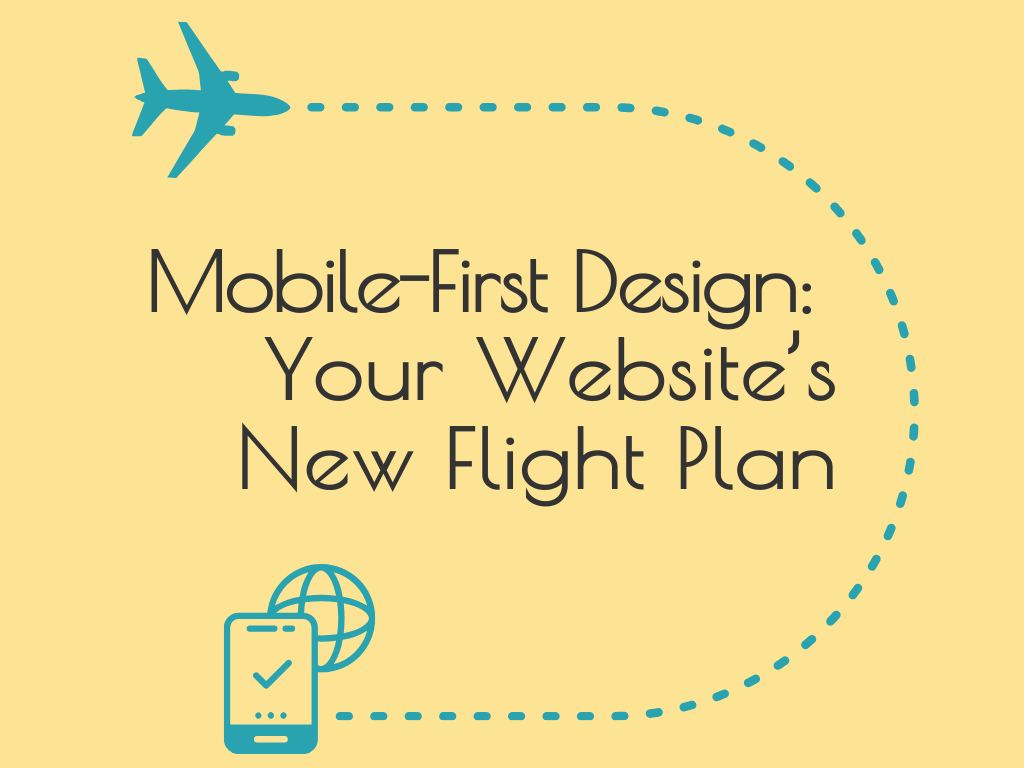Taking Off with Mobile-First Design

When was the last time you pulled out your laptop just to look up a restaurant menu, shop for a new pair of shoes, or check out a company’s services? If you’re like most people, the answer is probably rarely. With mobile traffic accounting for more than half of all web visits, websites today need to shine on smaller screens before they are viewed on desktops.
Mobile-first design isn’t just a trend; it’s the runway for where digital marketing and SEO are headed. By prioritizing the mobile experience, businesses can deliver smoother user journeys, faster page loads, and content that search engines actually favor in search rankings. For most businesses, with the exception of some B2B companies where most traffic still comes from desktop users (think: educational technology, SaaS services, and government contractors), chances are your audience is visiting your website from a mobile device.
Let’s break down why designing with a mobile-first mindset will help your brand’s website take flight.
1. Seamless User Experience
Mobile visitors are impatient. They want to land where they need to be in seconds, not after wading through confusing menus or squinting at tiny text. A mobile-first design ensures the essentials—navigation, content, and calls-to-action—are clear, simple, and accessible without pinching or zooming.
A clean, intuitive mobile layout reduces bounce rates and keeps visitors on board. When people can effortlessly use your site, they’re more likely to explore, engage, and convert.
2. Calls-to-Action That Inspire
Whether it’s booking a consultation, requesting a quote, or making a purchase, your calls-to-action (CTAs) are your site’s engines. Especially on mobile devices, CTAs lose power if they’re hidden at the bottom of a crowded page or too small to tap.
Mobile-first design puts your most important CTAs front and center, keeping them visible and easy to use. Big, bold buttons designed for touchscreens encourage visitors to take off on the next step—without frustration.
3. Website Speed That Keeps You Flying High
Page speed is one of the most critical factors in keeping your visitors from bailing mid-search. A website that drags its feet on mobile can cost you clicks, conversions, and rankings.
Designing mobile-first forces you to trim the excess download times. That means fewer oversized images, streamlined code, and a lighter, faster site overall. The result? A site that doesn’t just look great on mobile, but one that loads quickly and runs smoothly.
4. Easily Digestible Content Built for Mobile Viewing
Think about how people scroll on their phones: quickly, with short bursts of attention. Dense walls of text are like roadblocks—they cause discomfort and can send readers packing.
Mobile-first design prioritizes snackable content. Short paragraphs, bullet points, bold headings, and engaging visuals make it easier for users to absorb your message mid-scroll. It’s not just about looks; it’s about delivering information in a way that matches how people naturally consume content on their phones.
5. SEO: Mobile-First is the New Flight Plan
Search engines like Google have made it clear: mobile-first indexing is the standard. That means search engines primarily look at the mobile version of your site to determine rankings. If your site isn’t optimized for mobile, you’ll be left grounded while competitors climb the search results.
It’s not just traditional SEO you need to think about anymore. AI-driven search is changing the landscape. Tools like Google’s Search Generative Experience (SGE) and other AI platforms are pulling information in new ways, often highlighting concise, mobile-friendly content that’s easy to scan. Sites that load quickly, present clear answers, and structure content for mobile will be more likely to surface in these AI-powered results.
By designing mobile-first, you’re building a site that aligns with both current SEO practices and the next generation of AI search. Faster load times, improved user engagement, and optimized content layouts all signal to search engines that your site deserves a higher ranking.
Ready for Takeoff?
If your website was built with only desktop in mind, it might be time for a new flight plan. Mobile-first design isn’t about ignoring desktop users—it’s about ensuring your site takes off smoothly where most people start their journey: on mobile. By focusing on user experience, CTAs, speed, and SEO, you’re giving your audience a first-class ticket to engage with your brand.
The digital runway is clear—are you ready for takeoff?